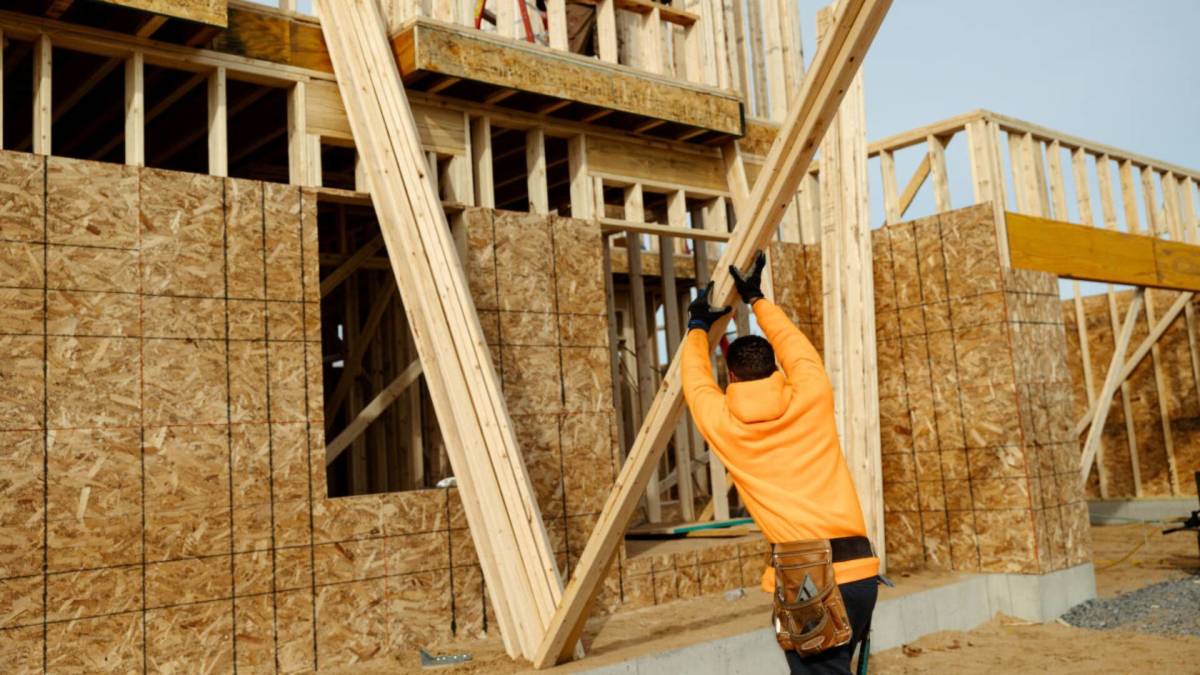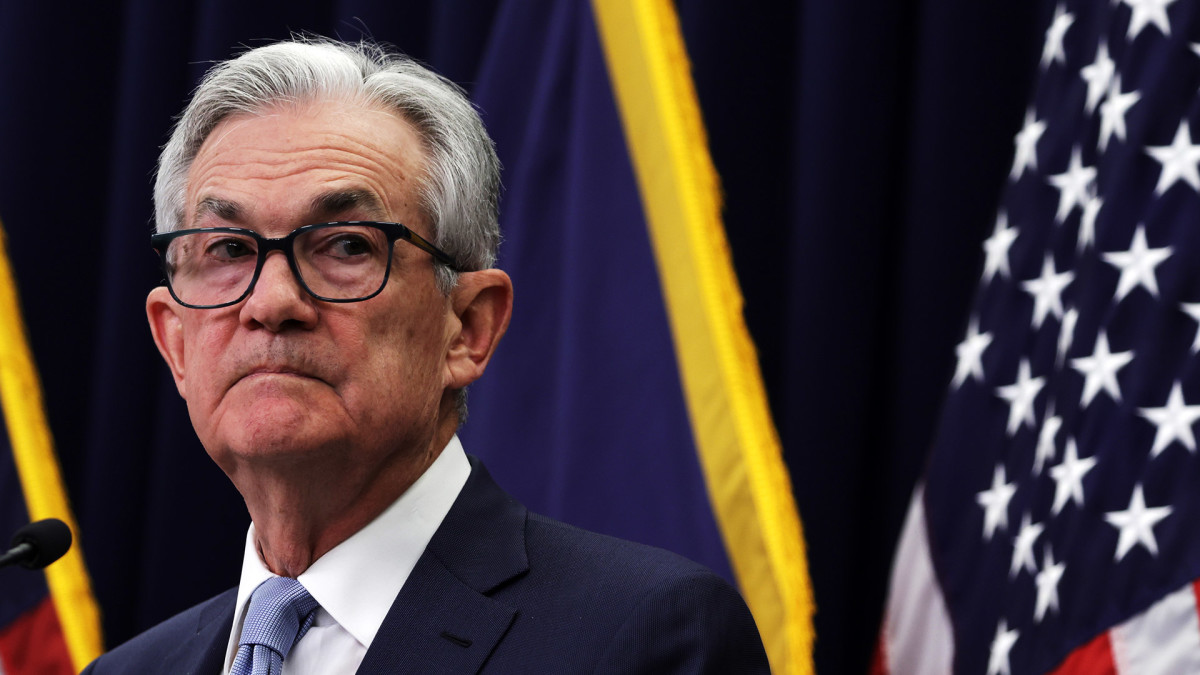
The U.S. housing market is facing some of the stiffest headwinds it's seen since the pandemic, with high mortgage rates keeping buyers on the sidelines and stubborn inflation holding back the much-needed supply of new homes.
The Commerce Department reported Thursday that new housing starts, which comprise both single-family homes and multifamily units, fell to the lowest levels since 2020 last month amid sky-high mortgage rates tied to the Federal Reserve's inflation fight.
Homebuilders broke ground on new units that would translate to a pace of 1.277 million a year last month. That's a 5.5% decline from April levels and far shy of Wall Street forecasts.
Permits for new construction, a key indicator of demand, also disappointed, falling 3.8% to an annualized rate of 1.386 million units. The pace of houses and apartments currently under construction also fell, as did the pace of completions of units that began earlier in the year.

Getty
"Builders find it difficult to build houses that homebuyers can afford with mortgage rates around 7%," said Holden Lewis, home expert at NerdWallet.
"While they wait for rates to fall, builders are holding back and applying for fewer construction permits," added Lewis, who sees a homebuilding rebound only when mortgage rates fall below 6.5%.
Rate relief may take time
That could be a long way off, however, given that the Fed continues to stress that its battle to return inflation closer to its 2% target will take at least several more months.
The central bank only recently lowered its forecasts for near-term rate cuts, with Fed officials having penciled in only one rate cut for this year, which markets are expecting in September. It also noted that any upside inflation surprise could keep rates elevated well into next year.
"The best thing we can do for the housing market is to bring inflation down so that we can bring rates down, so that the housing market can continue to normalize," Fed Chairman Jerome Powell told reporters in Washington last week.
Related: Surprise jobs report pummels Fed rate-cut bets
"There will still be a national housing shortage as there was before the pandemic, but the distortions that we see now with lock-ins (tied to) low mortgages" will ease, he said.
Federal Housing Finance Agency data suggest current homeowners are paying a national average mortgage rate of just under 4%. The Fed's current benchmark lending rate sits at a 22-year high of between 5.25% and 5.5%, with the national average mortgage rate for conforming 30-year loans hovering around 7%.
“We are in an unusual situation because a lack of progress on reducing shelter inflation, which is currently running at a 5.4% year-over-year rate, is making it difficult for the Fed to achieve its target inflation rate of 2%,” said Robert Dietz, chief economist for the National Association of Home Builders.
Following a report that showed homebuilder confidence at the lowest levels of the year, Dietz argues that the best way to reduce that shelter inflation component is to help kickstart a surge in new-home supply,
"A more favorable interest rate environment for construction and development loans would help to achieve this aim,” he said.
More inventory could lower prices
Mike Fratantoni, a senior vice president and chief economist at the Mortgage Bankers' Association, sees existing-home supply improving in the coming months, which should help overall sales. His organization noted that mortgage rates fell below the 7% threshold for the week ended June 14.
Purchase volumes, however, are still down around 10% from the year-earlier pace, and the decline in mortgage rates was tied to the biggest bond market rally of the year, with further reductions likely fueled only by unreliable inflation data.
Sill, the broader mortgage-rate decline should help existing-home sales, which were last pegged by the National Association of Realtors in April at around 2% lower than they were a year earlier.
Related: Housing has a problem bigger than interest rates
Housing inventory registered for sale was up 16.3% from last year at 1.21 million units, with the average price rising 5.7% to $407,600
The NAR's chief economist, Lawrence Yun, argues, however, that "the pace of price increases should taper off since more housing inventory is becoming available."
Signs of a pickup in new-home supply, meanwhile, are also wavering. Homebuilder Lennar (LEN) earlier this week missed Wall Street estimates for its current-quarter delivery forecast, even with a big 5% reduction in the average price per home.
More Real Estate:
- Veteran analyst just bought this under-the-radar housing stock
- Struggling housing brand files Chapter 7 bankruptcy, will liquidate
- Housing has a problem bigger than interest rates
Lennar delivered 19,690 homes over the three months ended in March, but it sees that tally rising only modestly, to between 20,500 and 21,000, over the three months ended in June.
"The demand for housing remained strong, but limited by affordability, interest rates, and sometimes, wavering consumer confidence," Chief Executive Stuart Miller told investors on June 17.
"Additionally, the chronic housing shortage, driven by over a decade of underproduction of housing stock, is problematic for families seeking affordable or attainable supply," he added.
Ian Shepherdson of Pantheon Macroeconomics, however, cautions that while lower mortgage rates are likely to support new-home sales, they're likely to be "accompanied by a weaker labor market and a rising unemployment rate, thinning the ranks of potential homebuyers."
"With that in mind, we expect residential investment to stagnate at best for a while yet," he noted.
Related: Veteran fund manager picks favorite stocks for 2024







